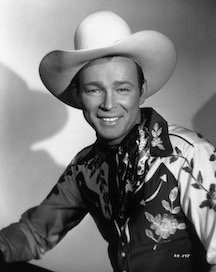
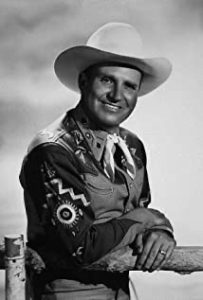 What became of the stars of the Saturday Matinee Westerns after the emergence of television and the demise of the “B” Westerns? Looking at the poll of “Top Ten Money Making Western Stars” in 1951, you find Roy Rogers in first place followed by Gene Autry. They were the two biggest stars of the Saturday Matinee era and they made smooth transitions into television. Roy’s career thrived. He had his own TV series, a busy schedule of personal appearances and recordings along with guest appearances on many of the top television variety shows. By the time Gene’s TV series ended, Gene was more involved in business activities outside the film industry. He limited his entertainment activities, although he continued to record.
What became of the stars of the Saturday Matinee Westerns after the emergence of television and the demise of the “B” Westerns? Looking at the poll of “Top Ten Money Making Western Stars” in 1951, you find Roy Rogers in first place followed by Gene Autry. They were the two biggest stars of the Saturday Matinee era and they made smooth transitions into television. Roy’s career thrived. He had his own TV series, a busy schedule of personal appearances and recordings along with guest appearances on many of the top television variety shows. By the time Gene’s TV series ended, Gene was more involved in business activities outside the film industry. He limited his entertainment activities, although he continued to record.
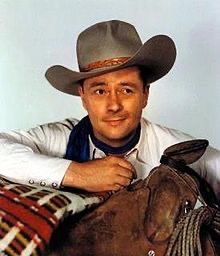 Tim Holt was #3 in the poll but, after his RKO series ended in 1952, his acting career consisted of only a few film and television appearances. Holt moved to Oklahoma and spent the rest of his working years in a variety of business activities.
Tim Holt was #3 in the poll but, after his RKO series ended in 1952, his acting career consisted of only a few film and television appearances. Holt moved to Oklahoma and spent the rest of his working years in a variety of business activities.
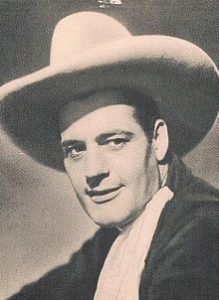 Charles Starrett, who ranked #4, had the longest run at one studio of any of the Saturday Matinee stars, staying with Columbia from 1935 through 1952. Although Columbia was run by the widely detested Harry Cohn, Starrett endured. Coming from a wealthy family, Starrett didn’t have any financial worries so, when his series ended in 1952, he retired to enjoy a comfortable life.
Charles Starrett, who ranked #4, had the longest run at one studio of any of the Saturday Matinee stars, staying with Columbia from 1935 through 1952. Although Columbia was run by the widely detested Harry Cohn, Starrett endured. Coming from a wealthy family, Starrett didn’t have any financial worries so, when his series ended in 1952, he retired to enjoy a comfortable life.
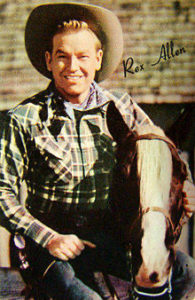 Rex Allen, who ranked #5, had everything it takes to become a major Western star, everything except timing. Rex didn’t arrive at Republic until 1950 and he made his first Western in 1954. For one season he starred in “The Frontier Doctor” series, one of Republic’s few forays into television. Fortunately, like Roy and Gene, Rex was a singer and thus sustained his career with personal appearances and recordings. Rex later achieved success doing narrations for Walt Disney’s nature and wildlife films, as well as doing voice overs for numerous television commercials.
Rex Allen, who ranked #5, had everything it takes to become a major Western star, everything except timing. Rex didn’t arrive at Republic until 1950 and he made his first Western in 1954. For one season he starred in “The Frontier Doctor” series, one of Republic’s few forays into television. Fortunately, like Roy and Gene, Rex was a singer and thus sustained his career with personal appearances and recordings. Rex later achieved success doing narrations for Walt Disney’s nature and wildlife films, as well as doing voice overs for numerous television commercials.
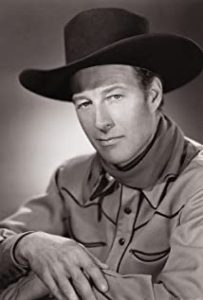 Bill Elliott, #6 in the poll, began his film career back in 1925 and appeared in countless small film roles, many of them uncredited. It wasn’t until 1938 that Elliott turned to Westerns and the “peaceable man” quickly became a popular Western star who continued making films after the Saturday Matinee era ended. From 1955 to 1957 he starred in several films as a police detective. Elliott retired to Las Vegas and later became the spokesman for a brand of cigarettes, which proved to be ironic when he died of cancer.
Bill Elliott, #6 in the poll, began his film career back in 1925 and appeared in countless small film roles, many of them uncredited. It wasn’t until 1938 that Elliott turned to Westerns and the “peaceable man” quickly became a popular Western star who continued making films after the Saturday Matinee era ended. From 1955 to 1957 he starred in several films as a police detective. Elliott retired to Las Vegas and later became the spokesman for a brand of cigarettes, which proved to be ironic when he died of cancer.
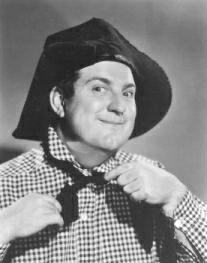 Western sidekick Smiley Burnette was #7 in the poll. Smiley was a talented man who played a wide variety of musical instruments, wrote fine songs including “Riding Down the Canyon” and “It’s My Lazy Day.” Smiley was Gene Autry’s sidekick in 62 films and Charles Starrett’s sidekick in an additional 56 films. After that, Smiley kept up a busy schedule of personal appearances before becoming the railroad engineer on the “Petticoat Junction” television series. He was still at the train’s controls when he passed away at the age of 55.
Western sidekick Smiley Burnette was #7 in the poll. Smiley was a talented man who played a wide variety of musical instruments, wrote fine songs including “Riding Down the Canyon” and “It’s My Lazy Day.” Smiley was Gene Autry’s sidekick in 62 films and Charles Starrett’s sidekick in an additional 56 films. After that, Smiley kept up a busy schedule of personal appearances before becoming the railroad engineer on the “Petticoat Junction” television series. He was still at the train’s controls when he passed away at the age of 55.
 Number 8 in the poll was Allan “Rocky” Lane, whose film career started in 1929. Although he didn’t begin appearing in Westerns until 1938, from then until 1953 he was a Western star. After that, he made numerous television appearances in dramatic roles until his career took an unusual turn in 1961 when he became the voice of “Mr. Ed,” the talking horse. That comedy series ran for five seasons but in none of the episodes, apparently at Lane’s request, was he credited.
Number 8 in the poll was Allan “Rocky” Lane, whose film career started in 1929. Although he didn’t begin appearing in Westerns until 1938, from then until 1953 he was a Western star. After that, he made numerous television appearances in dramatic roles until his career took an unusual turn in 1961 when he became the voice of “Mr. Ed,” the talking horse. That comedy series ran for five seasons but in none of the episodes, apparently at Lane’s request, was he credited.
 The only woman to ever appear on the list of Top Money Making Western Stars was Dale Evans, who was #9 in the 1951 poll. After Roy Rogers left Republic, he and Dale moved over to television with “The Roy Rogers Show.” The two were kept busy with a personal appearance schedule as well as guest appearances on television variety shows. Dale became the author of over two dozen books about her Christian faith and, for years, she traveled the country giving her religious testimony before church and social groups. Her Christian interview program, “A Date With Dale,” aired for 17 years on TBN, until her passing in 2001.
The only woman to ever appear on the list of Top Money Making Western Stars was Dale Evans, who was #9 in the 1951 poll. After Roy Rogers left Republic, he and Dale moved over to television with “The Roy Rogers Show.” The two were kept busy with a personal appearance schedule as well as guest appearances on television variety shows. Dale became the author of over two dozen books about her Christian faith and, for years, she traveled the country giving her religious testimony before church and social groups. Her Christian interview program, “A Date With Dale,” aired for 17 years on TBN, until her passing in 2001.
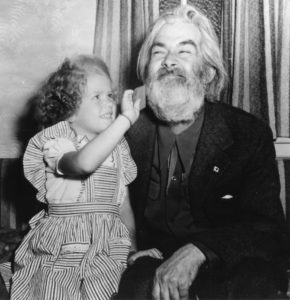
Me (Cheryl) combing Gabby’s beard.
Ranking 10th on the list was George “Gabby” Hayes (born and raised in New York), the definitive cowboy sidekick, who, after moving West, began his film career in 1929. Gabby appeared in 187 films ranging from comedies to dramas, but it was Westerns that suited him best. Gabby worked with most of the great names in Western films before and after joining the “Hopalong Cassidy” series in 1935 (where his character was Windy Holiday). Three years later, he signed with Republic, where he remained until 1946. Gabby is probably best remembered for the 40 films in which he appeared as Roy Rogers’ sidekick. He closed out his film career with four films with Randolph Scott, made between 1947 and 1950. For several years, Gabby had a children’s television program where he told tall tales of the Old West, before he finally retired.
Still, it’s obvious that, of the Saturday Matinee Western stars, only Roy and Gene made smooth transitions into television and maintained their careers. As the years have passed, many of the old Saturday Matinee Westerns have surfaced on television and these Western stars have enjoyed a bit of renewed popularity, although they didn’t benefit financially. Fortunately, many of their films can still be seen on television and home video, or via the ever-changing means of transmission such as streaming. And, of course, these Western heroes still ride the range in our memories!









